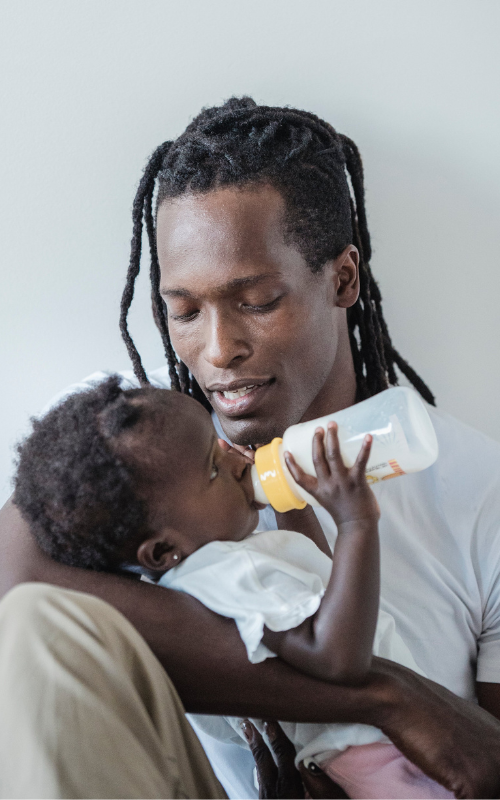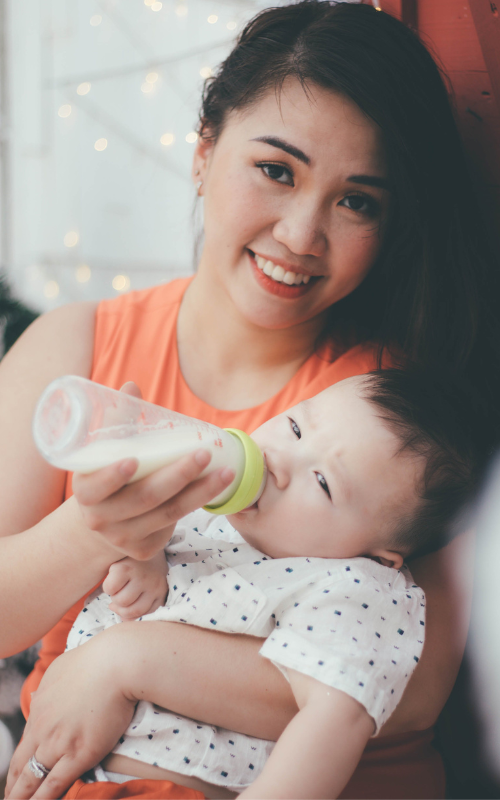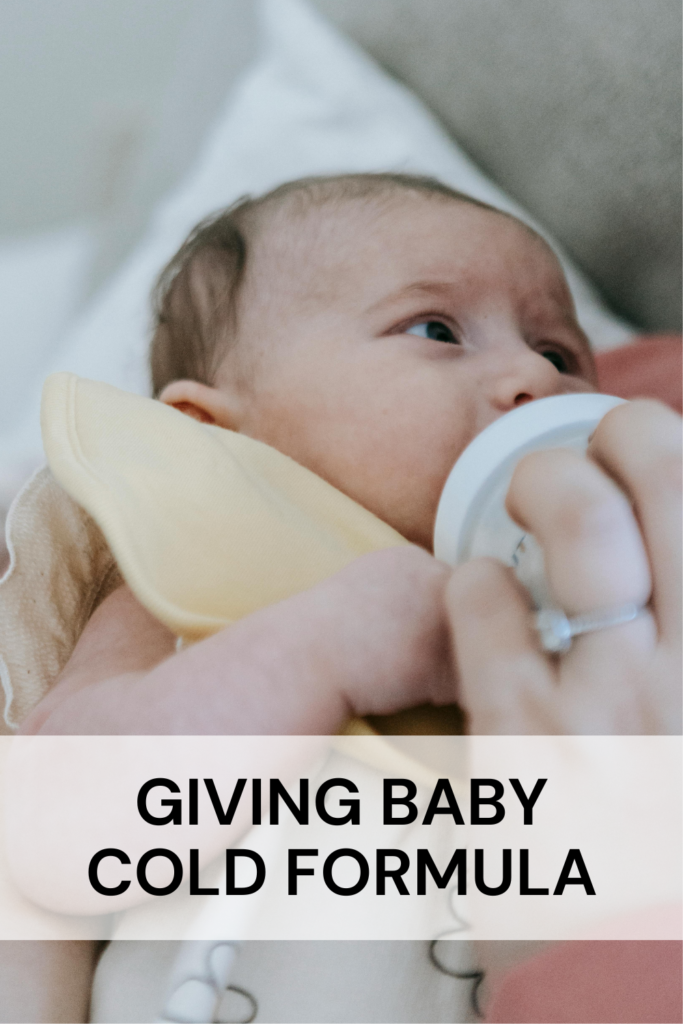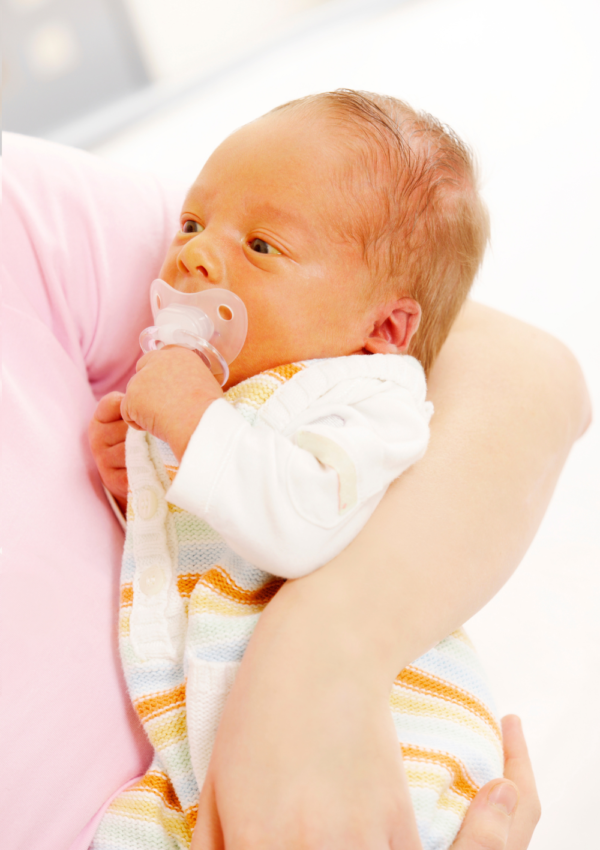Should we be giving baby cold formula? If you are asking yourself this question, this post is for you.
DISCLOSURE This post may contain affiliate links, meaning if you decide to make a purchase via my links, I will earn a commission at no extra cost to you. As an Amazon Associate I earn from qualifying purchases. Thank you for your support.
Disclaimer: The information provided in this blog post is for educational purposes only and should not be used as a substitute for professional medical advice, diagnosis, or treatment. Always seek the guidance of your pediatrician or qualified healthcare provider with any questions you may have regarding your child’s health. If you think your child may have a medical emergency, call your doctor or emergency services immediately. Read our full Medical Disclaimer here.
You prepare a bottle to quiet your newborn’s cries. But hearing the microwave hum, you pause wondering – should formula be served warm or cold? You want what’s healthiest and most comfortable for baby’s still-developing digestive system. But information conflicts on ideal milk temperatures.
This common feeding formula debate stems from lack of formal guidelines and differences in individual infant tolerance. As nutrition science and storage safety standards evolve, here are some points for parents to consider when answering the question should we be giving baby cold formula:
Reasons Some Parents Warm Bottles
1. Warm = Natural Association
Body-temperature formula may better mimic the soothing warmth of nursing directly at mother’s breast. The familiar coziness can provide comfort, especially for very young babies transitioning from exclusive breastfeeding who show preference for warmer bottles.
A good example of a bottle warmer is the Philips Avent Premium Fast Bottle Warmer, with Smart Temperature Control. The most-loved baby bottles are the Dr. Brown’s Natural Flow® Anti-Colic. A great Baby bottle sterilizer is the Dr. Brown’s All-in-One Sterilizer and Dryer for Baby Bottles.

2. Improves Formula Taste & Smell
Heating formula to just above room temperature activates aroma compounds, brings out sweetness, and makes the milk more reminiscent of breast milk. This may increase palatability for some babies.

3. Promotes Formula Absorption
Some sources suggest warmer formula may digest slightly easier. But evidence proves minimal: body heat rapidly equilibrates liquid to internal temperature once consumed anyway.

Potential Benefits of Giving Baby Cold Formula
4. Giving Baby Cold Formula: The Body Adapts Fine Either Way
Formula companies must adhere to food safety standards. As such, ingredients remain safe at any reasonable temperature. And newborn babies have innate digestive enzymes efficiently breaking down proteins and fats within either cold or warm milk.

5. Giving Baby Cold Formula: Better Preservation from Bacterial Growth
Bacteria multiply the fastest between temperatures of 40° and 140° Fahrenheit. Quick cooling after preparation, then refrigerating capped bottles keeps formula safest in terms of food contamination risks. This avoids the need to reheat multiple times.

6. Giving Baby Cold Formula: Easier for On-the-Go Feeding
Pre-made bottles stored chilled require no warming to quickly feed a hungry baby while out running errands. Cold formula may suit on-demand feeding needs or personalities of babies more interested in eating immediately than waiting.

Baby’s Individual Preference Rules
Research on the measurable impacts of formula temperature remains extremely limited. But what studies do show is this: overall, acceptability depends most on each baby’s personal taste. The taste buds vary! So pour in small test amounts of chilled versus warmed formula to discover which better suits your infant, then adjust accordingly.

Safety First
Regardless of temperature, proper hygiene, preparation, handling and storage of baby’s bottles remains critical. Follow the label instructions carefully and discard any unfinished formulas after feeding time. Never freeze or re-serve leftover milk as nutrients degrade and bacteria multiply over time.

Conclusion
This post was all about whether parents should be giving baby cold formula. While many parents still default to warming bottles to closely replicate breastfeeding, modern knowledge shows cold formula poses no harm and offers certain advantages like easier handling and storage. But as with many infant decisions – a baby’s reaction and comfort should guide choices with both options viable if procedures are performed safely. Test your baby’s preferences and let their contentment determine what temperature fits best! Good luck!







Leave a Reply